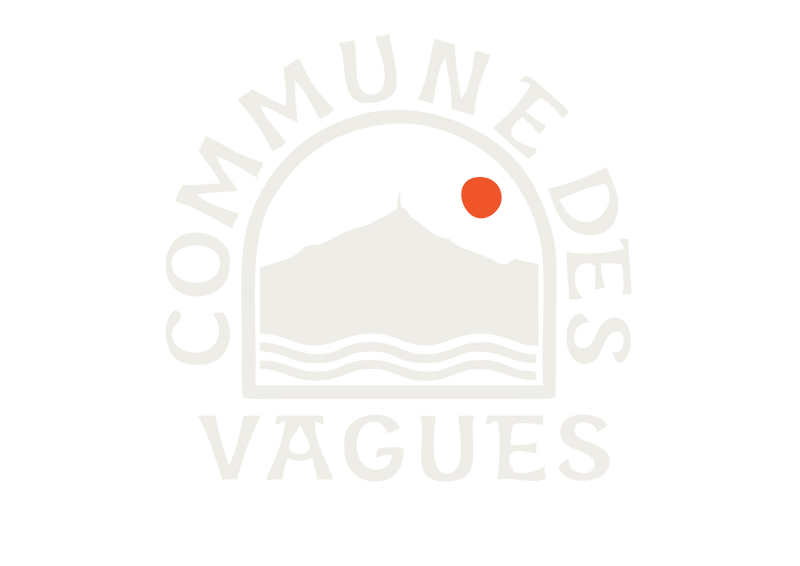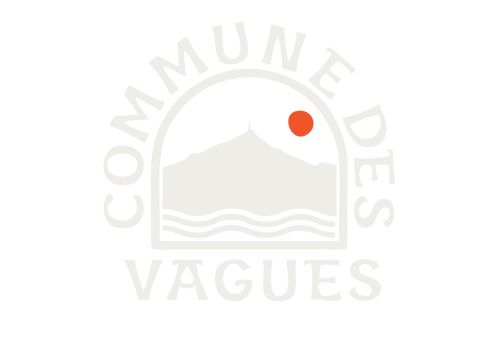Biarritz Sixties: Interview with René Bégué
Posted on May 11 2024,
René Bégué's book, Biarritz Sixties: Surf Origins captures the zeitgeist of the surf culture in France during this period. A well accomplished surfer himself, he spent much of his time in the water. So, rather than focusing on pure surf photography, he captured the many special moments in between surfing. These are the moments that are true, and immediately capture the viewers attention with romanticism and nostalgia. The beauty of this book is that the viewer can imagine what life was like during this wonderful period in and around this small corner of France. One is left with the feeling of being born in the wrong era and wishing they were there themselves to experience this magical time.
"At the end of the 60's everything started to change"
The moment I bought this book in 2019, it immediately inspired and validated an idea I had been playing with in my head for a few years. This period in time has always felt special to me. Not just for nostalgia, but for reasons beyond a longing for times gone by. Seeing these images for the first time transported me back to this period and reminded me to follow my passion. I had the honor of interviewing Mr Bégué at his home overlooking Côte Des Basques. We sat outside on a beautiful morning, talked and watched good waves roll through right out front.

"This year almost a million people migrated to France from Algeria"
Tell me a little about yourself. Where you grew up? What your childhood was like?
I was born in Algeria, the 1st of January 1949. It's not easy to have a birthday on this day. You can't find a restaurant open to invite your friends to celebrate your birthday, haha! But, it's not the point. My father was born in Bayonne, but lived in Algeria since 1929, so every summer we came back to France. We lived in the Villa Hélianthe here just above us, and we spent the whole summer here at the beach. Then after summer we went back to Algeria. This is why when surfing first arrived here at the Côte Des Basques, I was here to see it. I was only 8, but I remember it well. Then the independance of Algeria came in 1962 and we came here to live. That year almost a million people migrated to France from Algeria.

Wow! I imagine that would have been a big change for you. What brought you close to surfing?
At the time of our return to France in July 1962 my father bought my brother and I a surfboard. On this board we learned to surf. It was one of the first surfboards that Michel Barland shaped and my father bought it for 150 francs. It was not so good! As it was not such a very good board, we sold it to the Luna Park bar in Biarritz and they put it on the wall for decoration. Then the board finished his life in the S'Carlina nightclub in Courchevel.

In your book it is mentioned you bought your first camera from a visiting Australian surfer. Were you already taking photos before that?
Yes, this is true. I wanted to buy his surfboard, but he had already sold it. I had spent the whole day trying to find enough francs to buy his surfboard and when I came to him and said "I want to buy your surfboard", he told me it was already sold, but "I have a camera"! I had the money so I said, "ok give me your camera". Prior to this I did not have any serious interest in photography. I had a little shitty kind of instamatic and I took a few photos but that is it. There are some photos in the book with my shitty little camera.

Your photos present a very romantic portrayal of Biarritz in the sixties. Can you tell me a little bit about what you felt was really special about this place and time?
I would say one word, Liberté. In France we have Liberté, Egalité, Fraternité, but today in France we do not discuss Liberté, we only discuss Libertés which becomes more restrictive, and we have less Liberté. At this time surfing was pure Liberté.

Lifestyle photography is very challenging as you only have a brief moment to capture an image. Today you can shoot a thousand photos to get one with no concern. Film is also expensive! Can you tell me what equipment you were using at this time and what approach you took to capture such beautiful images?
Yes, I only had the one camera the Exakta Varex and it came with a 50mm and 300mm lens for shooting photos of surfing. But I was not a surf photographer because when the surf was good, I was out surfing! So, I would just take pictures of my friends around here. This is why the book shows how it was during this period. Film was expensive and to print was expensive, but luckily I had a friend who showed me how to do it. I bought big rolls of black and white film, and I would hand roll the film in my closet to use in my camera. It is true today when you take a photo with your camera or phone you do not really care too much about what is around you bcause you can fix everything later. But at this time, you had to really look at the photo you were taking. After some time, if you have the eye and the brain for it you discover how to frame the photo.

There were already people surfing in the region before the sixties, we can call them the "elders". But, you and your generation were the youngsters who really took to everything new that was happening in surfing and the culture. Was there any resistance to this change from the establishment?
I don't think it works this way. At this time, we had the "Tontons surfers", the old guys, who already started surfing in the 50's. These guys were working as craftsmen and had families. Barland was a mechanical engineer, Rott was making wooden heels for shoes, Reinhardt was working in plywood, and Hennebutte was making inflatable boats. So, they all started to make boards working with what they already knew. In the early 60's there were maybe 10 boards at the beach. At this time there was no leash so when these guys would take a wave and fall, the board would come back to shore. As you can see the rocks here are not good for boards! So, our mission as the young kids was to stop the board from hitting the rocks. But when you weigh 30 kilos and you have to stop a 20 kilos board it's a bit difficult! So, during the time when the surfer who fell would have to make his way back to shore, we had the possibility to try and catch a wave or two. All the kids at the Côtes des Basques started to surf like that, and the surfers were very kind. At high tide when you cannot surf here, they would load up the cars, the kids and the boards, and they took us to discover new places. La Barre, Guethary, Hendaye, etc. It's good to discover a sport at the beginning because you don't have any champions, only people who enjoy it.
In the 60's many surfers were already traveling around the world looking for waves, but Biarritz was not so famous for surf. Can you speak about what it was like when surfers from other places started to arrive here?
Well in the early 60's we had Jan Lee from Hawaii and Peter Troy from Australia arrive here. They were both very good surfers. Before they arrived, for us surfing was taking a wave and going straight to shore. You were happy if your board hit the sand! They taught us how to turn our boards and walk on them. They taught us about using wax. Before this we used candles, which is not the same! So, during their time here we decided to make a competition, it was the first International Surf Competition at La Barre in 1962. We called it International because there was a Hawaiian, an Australian, and 10 French guys. Peter Troy came 1st, Jan Lee came 2nd, and Jean-Marie Lartigau came 3rd. After this Peter Troy traveled the world as the French International surfing champion!
Then, in 1964 we had people arrive from California with fabulous boards, surf trunks, tee shirts, skateboards and music! At this time, I was only 15 and learning English in school so I had to improve my Engligh in order to try and buy their skateboard, tee shirts, and trunks, everything they had! Everything was a new discovery.

Obviously the 60's were very different than today. With the crowds, the new buildings, and popularity of the surf here now, everything has changed. But this is what has happened everywhere in the world. What do you notice most about the change here?
As part of this question, how much do you feel the actual surf has changed? With the exception of crowds, does it break differently now?
People ask me "where is the best wave you have taken in your life, is it Australia, Hawaii?" I tell them "no it is here!" When you live for 60 years in front of your surf spot you have many days that are perfect, and you are there. The waves have not changed. Some places have changed like La Barre, but the same construction that created La Barre is the same that eventually destroyed it.

What makes you feel stoked these days?
Life. I don't surf anymore because I have pain with my back and it is very crowded. Surfing must remain a pleasure, I cannot stand up fast anymore and consequently find the good placement on a wave. I still watch and enjoy surfing. I am curious about the foil boards and how they glide. This seems very interesting to me. I love the glide and the pleasure. For me it was always about La Glisse!
All photos by René Bégué are protected by copyright and not to be used for commercial purpose.


